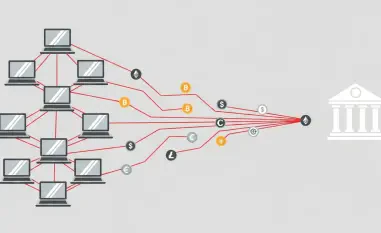Imagine a world where state-sponsored cyber attackers silently infiltrate a company’s network, remaining undiscovered for years while siphoning off precious intellectual property or crucial government data. This is not a plot from a spy movie; it’s the reality of Advanced Persistent Threats (APTs).
The Gravity of APTs
Why should businesses and governments worry about APTs? The answer lies in the sophistication and persistence of these attacks. A surprising fact: a single APT can remain undetected for an average of three years, leading to significant data breaches and espionage. High-profile incidents, such as the attack on a major global financial institution, illustrate just how pervasive and damaging these threats can be.
Understanding the Importance of APT Threats
APTs are not your typical cyberattacks. They are intricate, stealthy, and target-specific, often aimed at high-value entities like government agencies, multinational corporations, and research institutions. The primary goal is data theft or espionage, which can have catastrophic real-world implications—from undermining national security to massive financial losses. Recognizing APTs is increasingly crucial as cyber threats evolve, accentuating the collective anxiety surrounding data security.
Dissecting the APT Attack Lifecycle
Understanding how APTs operate is vital to combating them. These attacks typically follow a strategic lifecycle: initial entry through exploiting vulnerabilities, establishing a foothold within the network, escalating privileges, conducting internal reconnaissance, and finally exfiltrating data. Advanced techniques include leveraging zero-day vulnerabilities and deploying sophisticated malware. A relevant case study is the notorious Stuxnet attack, which successfully disrupted nuclear operations by using highly advanced and clandestine methods.
Expert Insights on the APT Landscape
Cybersecurity experts highlight the ever-escalating landscape of APTs. According to Dr. Jane Smith, a leading cybersecurity researcher, “The growth of APT incidents over the past few years is alarming, reflecting the increasing capabilities of both state-sponsored and independent attackers.” Authoritative research indicates a sharp rise in APT attacks, with organizations experiencing a 50% year-over-year increase in such threats. Anecdotes from cybersecurity professionals underscore the persistent nature of APTs, showcasing the continuous battle between attackers and defenders.
Strategies for Defense Against APTs
To counteract APTs, a holistic, multi-layered defense strategy is essential. This includes deploying advanced threat detection systems, continuously monitoring network activity, and conducting regular security audits. Emphasizing user education is vital, ensuring that employees can recognize and respond to potential threats. Establishing robust incident response protocols and investing in cutting-edge cybersecurity infrastructure are practical steps organizations can take to safeguard against these persistent threats.
The current landscape of cybersecurity presents formidable challenges, but with a concerted effort leveraging advanced technologies, ongoing education, and expert insights, it is possible to mitigate the threat of APTs effectively. Moving forward, it is imperative for organizations to adopt proactive measures and stay vigilant to protect their invaluable assets from these sophisticated cyber adversaries.













